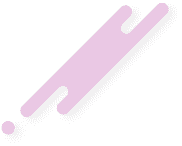AI Revolution in Web Design: Adopt or Become Obsolete
Web design influenced by the adoption of Artificial Intelligence.
AI enables adaptive, personalised and interactive web design.
Common applications of AI in web design, such as chatbots, tailored content recommendations, and automatic optimizations.
Leveraging AI for an intuitive user interface and user experience.
AI's role in data-driven decision-making and strategy.
Potential downsides of AI, including over-reliance, lack of creativity and privacy concerns.
The Future of AI in web design.
Web design, like much of our world today, is experiencing a revolution courtesy of Artificial Intelligence (AI). Similar to a accommodating a new neighbour, the web design community is finding new ways to facilitate AI. The transformative technology offers a pool of possibilities for web design that are not just practical but incredibly innovative and personal. AI is creating smarter, adaptable, and more engaging web designs and when used right, can significantly improve the overall user experience.
While AI may initially be seen as an impersonal, machine-based system, it is actually quite the contrary when it comes to web design. Think of chatbots for example. These creepy but convenient little fellas are almost omnipresent now. They are designed to serve users by responding to their queries and providing information at any hour of the day. They might not offer a laugh or two like your friendly bartender, but they surely add interactive value to many websites.
Content recommendations are another intriguing application area for AI within web design. You've likely experienced the uncanny accuracy of recommended reads or product suggestions that eerily coincide with your interests or needs. That's AI doing its invisible magic, predicting and tailoring the content for each user based on their past interactions. It's like having your good old local grocer, knowing your favourites, but in a digital cocoon.
The use of AI doesn't stop at chatbots and recommendations; it also extends to automatic web optimisations. For instance, AI can be used to adjust web design elements, such as images and typography, to create an optimal viewing experience. It's like having a personal assistant – one that's not just carrying your bag but also intuitively tweaking your website for peak performance.
But it's not all about pleasing the user – AI is a valuable tool for us web designers as well. Facilitating data-driven decision-making and strategic enhancements makes our job an absolute treat. Information like user behaviour patterns, popular site elements, and factors influencing user engagement can be gathered and analysed via AI, helping us make a more informed, data-backed design strategy. It's like having a crystal ball, handing us the secrets to web design success.
However, AI, like everything else, comes with its share of concerns. Over-reliance on AI may lead to creativity taking a backseat. Also, issues related to privacy and data security are valid concerns as AI mostly involves the processing of user data. It's a bit like knowing the dark side of an otherwise charming mate.
The future for AI and web design together seems bright and exciting. From creating adaptive, interactive designs to offering real-time analytics and personalisation features, AI continues to reshape the landscape of web design. As designers, we need to ensure that we strike a balance between leveraging this technology and maintaining the human touch in our creations.
As a web designer from Liverpool, I reckon it's a bit like playing a game of footie. While the players (AI tools) help you achieve the goals, the coach (web designer) remains a pivotal character. AI can provide the tools and the strategies but ultimately, it's the designer's creativity, ingenuity and human touch that would keep users coming back for more. Remember to embrace the new technology but don't forget to celebrate and incorporate the human artistry that makes each design unique. So in short, adopt AI, adapt to it, but don't let it obscure your own design identity.


